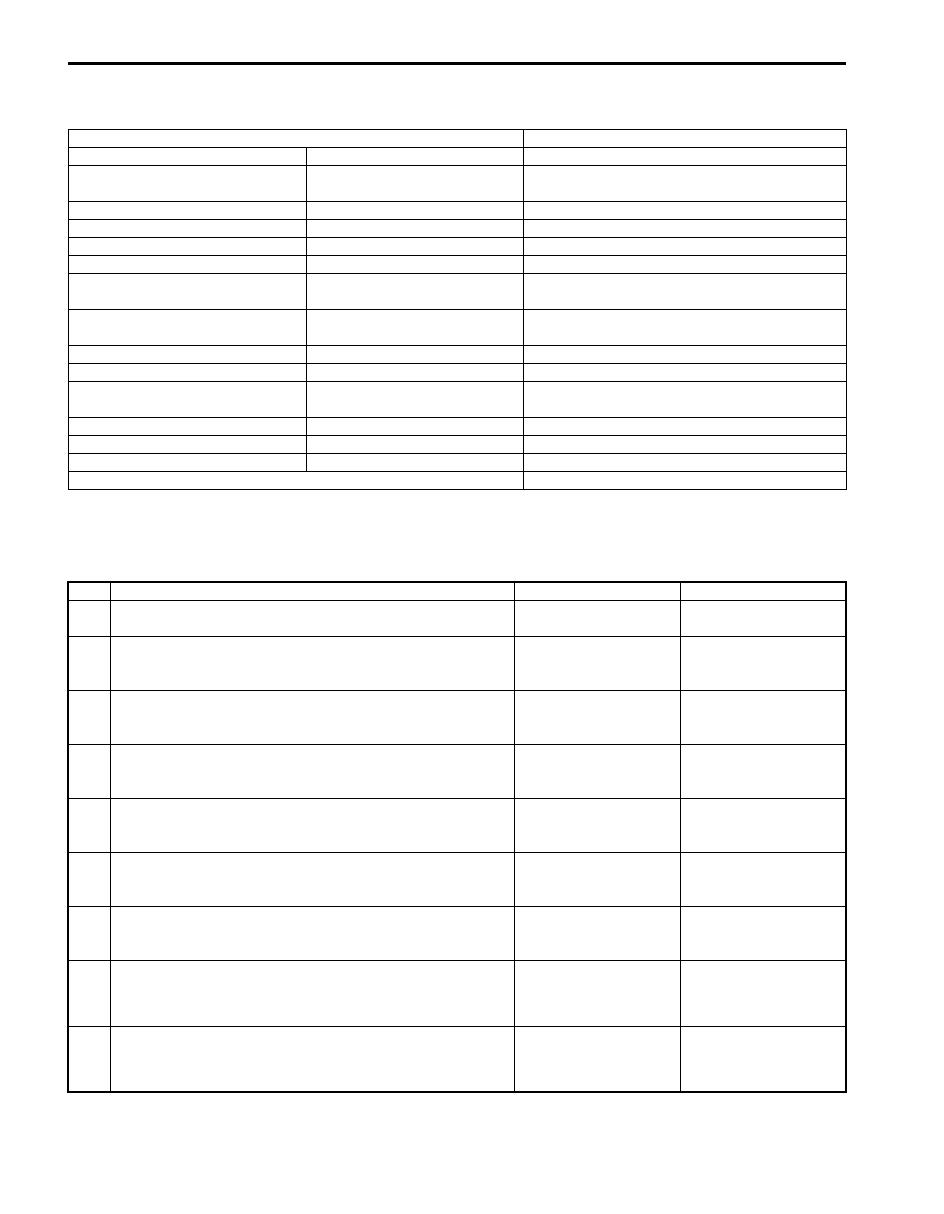Suzuki Grand Vitara JB627. Manual - part 211

5A-28 Automatic Transmission/Transaxle:
Visual Inspection
S6JB0B5104008
Visually check the following parts and systems.
A/T Basic Check
S6JB0B5104009
This check is important for troubleshooting when TCM has detected no DTC and no abnormality has been noted in
visual inspection. Follow the flow table carefully.
Inspection Item
Referring
A/T fluid
Level, leakage, color
A/T fluid hoses
Disconnection, looseness,
deterioration
“Oil Cooler Hoses Replacement”
A/T select cable
Installation, operation
Engine oil
Level, leakage
“Engine Oil and Filter Change in Section 0B”
Engine coolant
Level, leakage
“Engine Coolant Change in Section 0B”
Battery
Fluid level, corrosion of terminal
Connectors of electric wire harness Disconnection friction
“Intermittent and Poor Connection Inspection in
Section 00”
Fuses
Burning
“Cautions in Body Electrical System Servicing in
Section 9A”
Parts
Installation, damage
Bolt
Looseness
Malfunction indicator lamp
Operation at engine start
“Malfunction Indicator Lamp (MIL) Check in
Section 1A”
Charge warning light
Operation at engine start
“Generator Symptom Diagnosis in Section 1J”
Engine oil pressure warning light
Operation at engine start
“Oil Pressure Switch Inspection in Section 9C”
Engine coolant temp. meter
Operation at engine start
Other parts that can be checked visually
Step
Action
Yes
No
1
Was “A/T System Check” performed?
Go to Step 2.
Go to “A/T System
Check”.
2
Perform “Road Test”
Is it OK?
Go to Step 3.
Proceed to
“Troubleshooting” in
“Road Test”.
3
Perform “Manual Road Test”
Is it OK?
Go to Step 4.
Proceed to
“Troubleshooting” in
“Manual Road Test”.
4
Perform “Engine Brake Test”
Is it OK?
Go to Step 5.
Proceed to
“Troubleshooting” in
“Engine Brake Test”.
5
Perform “Stall Test”
Is it OK?
Go to Step 6.
Proceed to
“Troubleshooting” in
“Stall Test”.
6
Perform “Time Lag Test”
Is it OK?
Go to Step 7.
Proceed to
“Troubleshooting” in
“Time Lag Test”.
7
Perform “Line Pressure Test”
Is it OK?
Go to Step 8.
Proceed to
“Troubleshooting” in
“Line Pressure Test”.
8
1) Proceed to “Trouble Diagnosis 1” in “A/T Symptom
Is trouble identified?
Repair or replace faulty
parts.
Go to Step 9.
9
1) Proceed to “Trouble Diagnosis 2” in “A/T Symptom
Is trouble identified?
Repair or replace faulty
parts.
Proceed to “Trouble
Diagnosis 3” in “A/T
Symptom Diagnosis”.